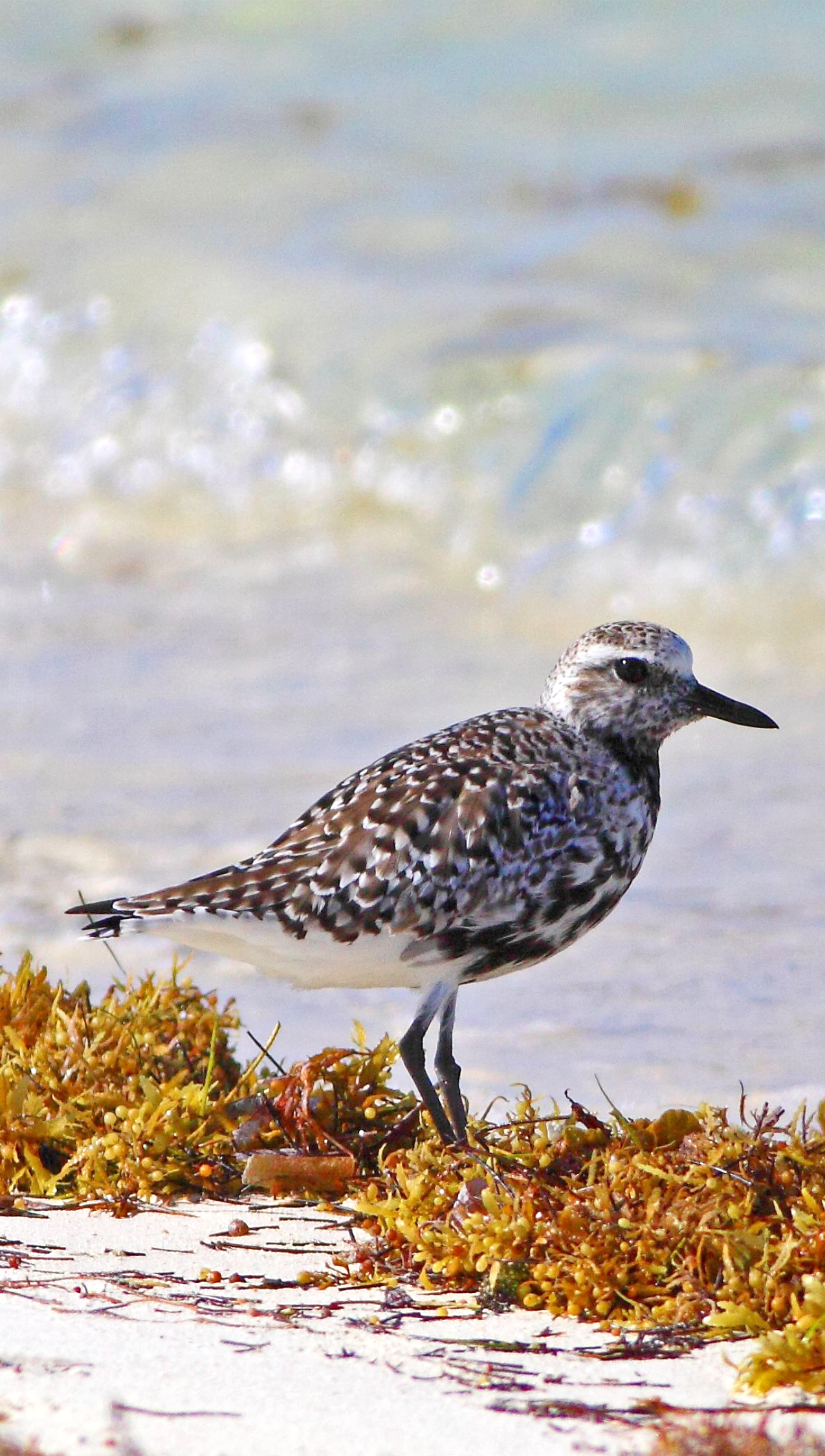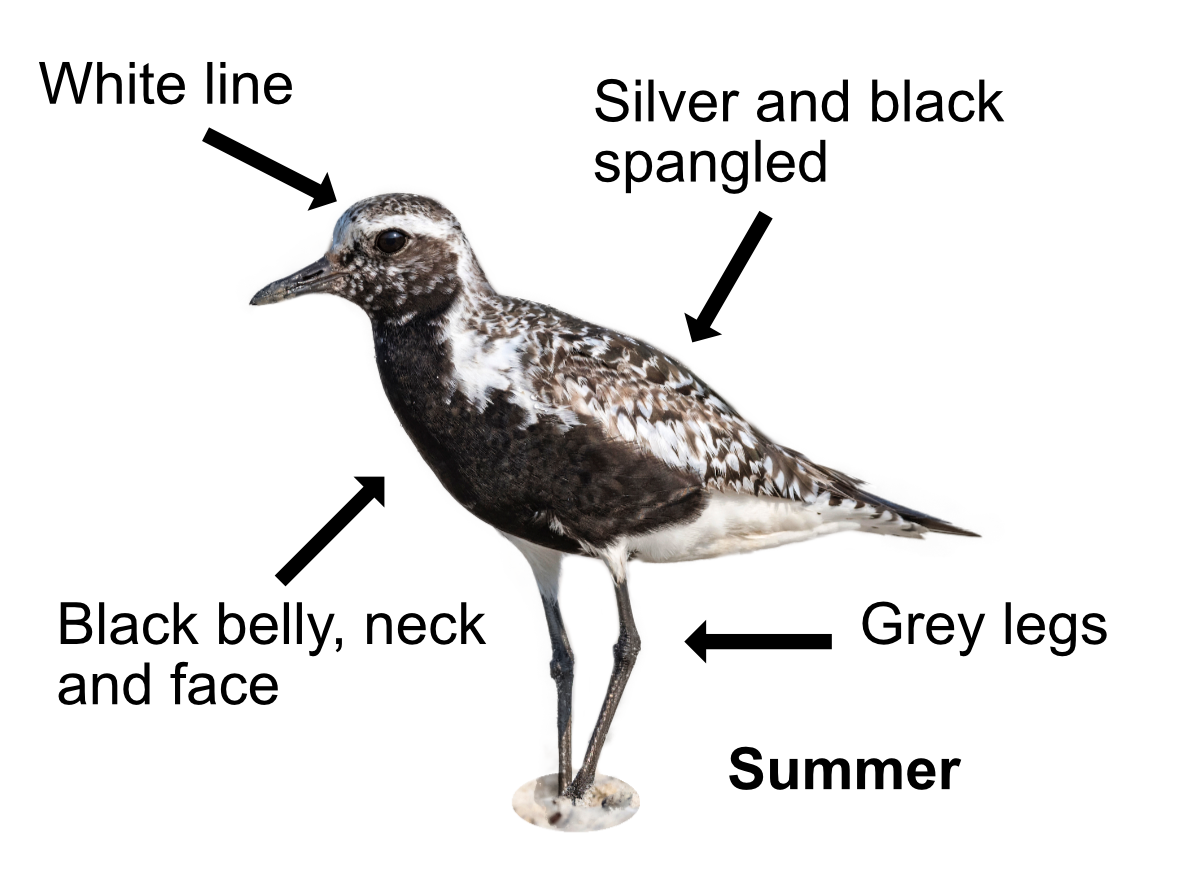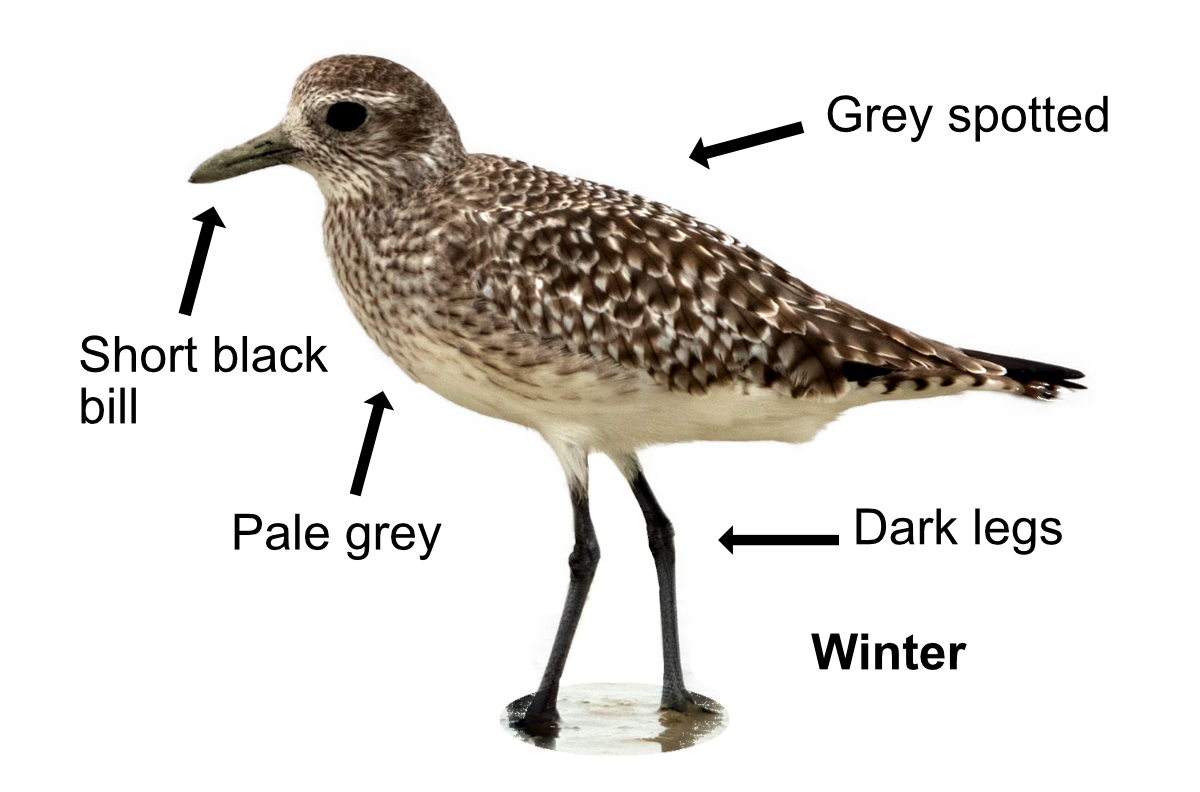
The Grey Plover is a bit of a loner, preferring his own company or being with a few friends when feeding along the beach, only joining others when coming together in a large flock to roost at night. Although a few birds stay during summer, the Grey Plover is really a winter migrant, arriving here from July, peaking in autumn, and leaving from April onwards. You find them along the coast as they prefer sandy or muddy estuaries.

The Grey Plover is a chunky, black, white and grey wader, plumper than the similar Golden Plover. In summer, it has a black belly, neck and face with a silver and black spangled back, a short black bill, and dark grey legs. A white line separates the speckled back and black front, quite the trendy goth about town. In winter, it loses most of its black feathers and has grey spotted upperparts and pale grey underparts. It has easy to see black armpits in flight, a white wing bar and white rump. Their call is a mournful "pee-oo-ee".
They eat insects, worms, and crustaceans, mainly dining alone, often at night, and will defend their area of the shore. They feed by picking food from the surface using the plover run-stop-tilt-stand action - standing and watching, running forward, pecking, then standing still again.

The Grey Plover is the only plover that doesn't breed here. It nests in the Arctic on the northern coasts of Alaska, Canada, and Russia, returning to its breeding ground in May. The nest is a shallow scrape on the ground made by both birds. The female lays 4 eggs in early June, which hatch after 26 days. She leaves the young when they are 12 days old and poor dad has to do all the child-care. The youngsters can fly 45 days later.
About 44,000 Grey Plovers overwinter here between August and April and as many as 70,000 pass through in spring. Their favourite stopping place is the Wash. Males overwinter farther north than females as ladies always moan about being cold, so a high proportion seen in Britain are males with females travelling on to Southern Europe and Africa for a bit of sun. The oldest Grey Plover was over 21, which is amazingly old for such a small bird.
Their Latin name is 'pulvialis squatarola' from the Latin 'pluvia' for 'rain', as people believed they flocked when rain was imminent and because their backs looked like raindrops. The 'squatarola' comes from 'sgatarola' which was a Venetian name for a plover. A chic, Italian, gothic bird then.